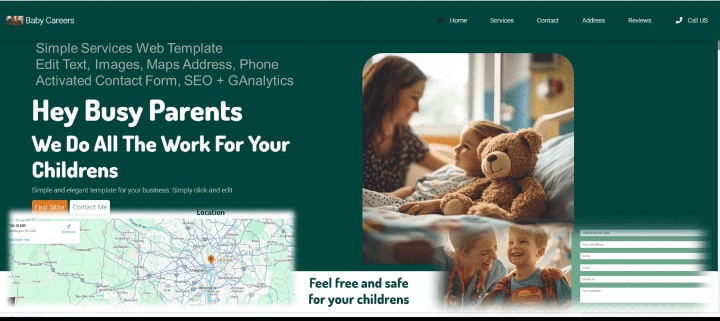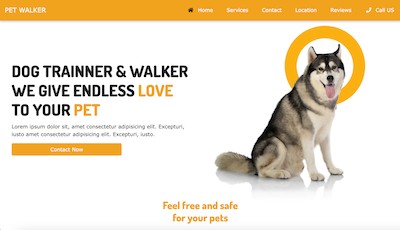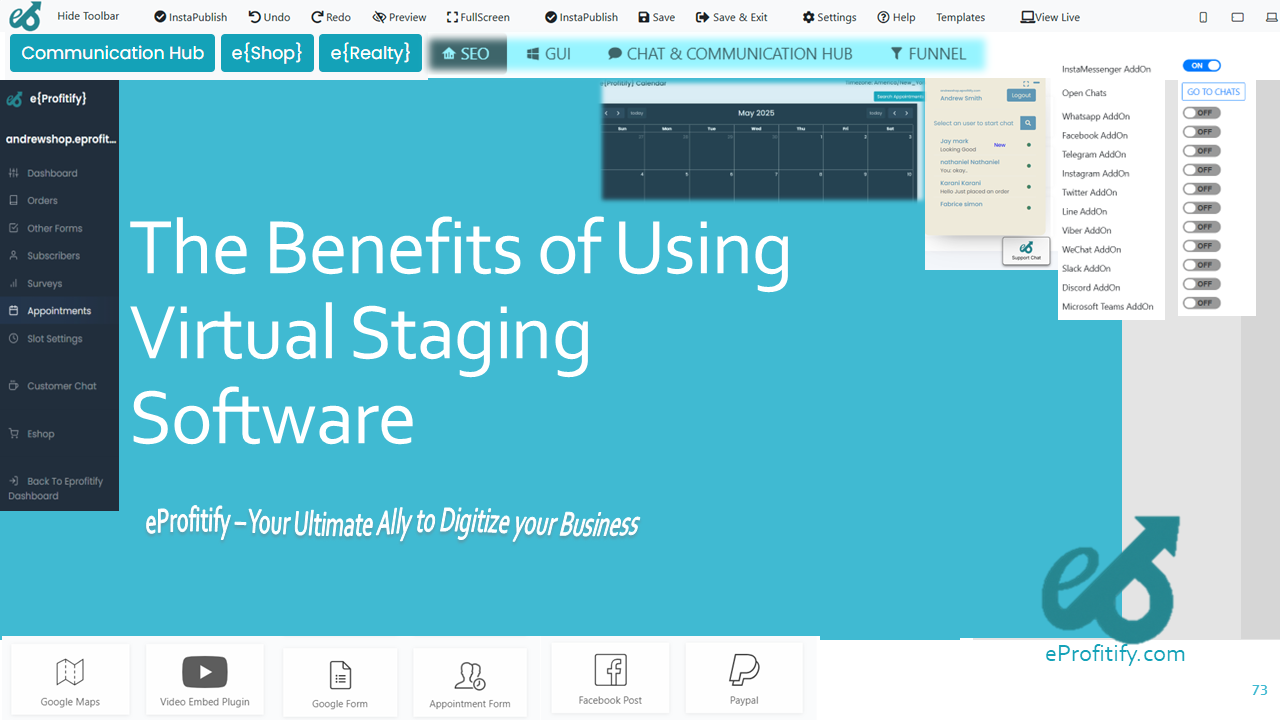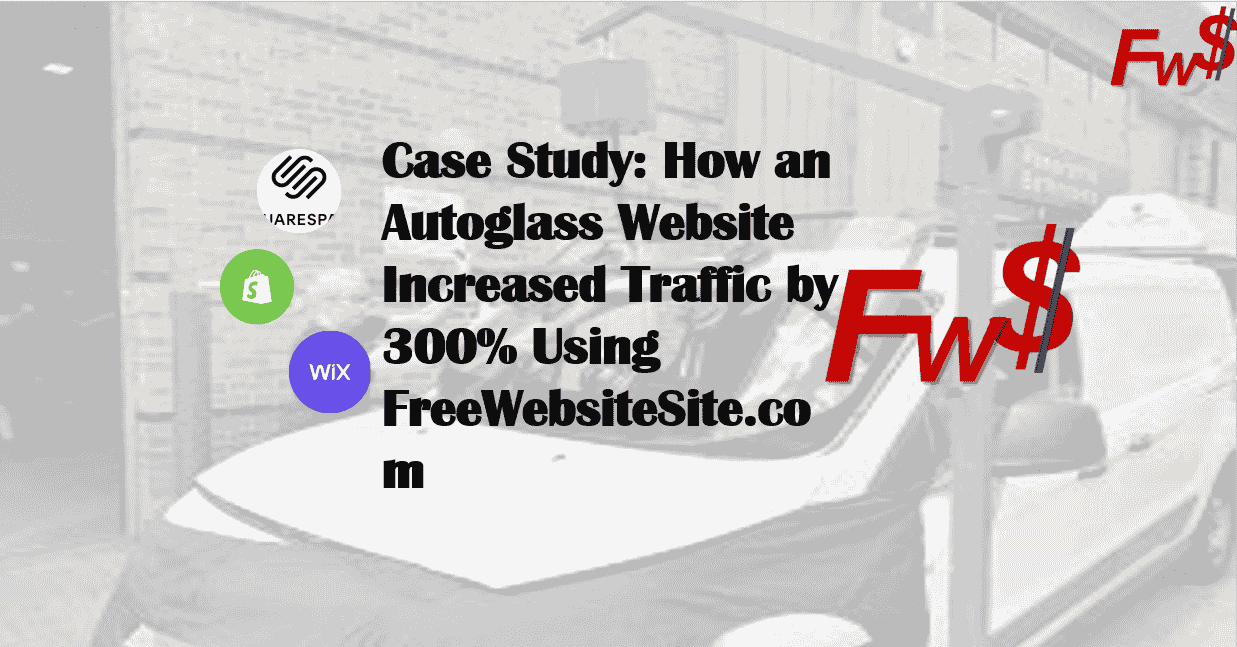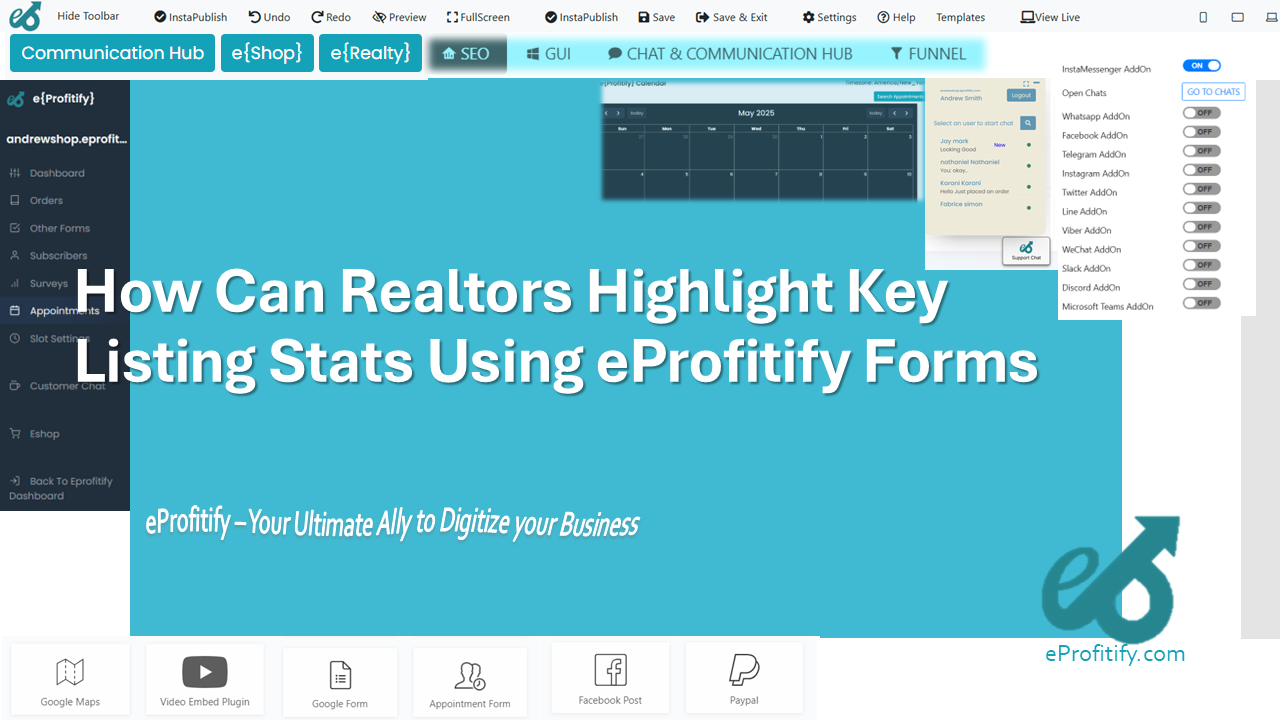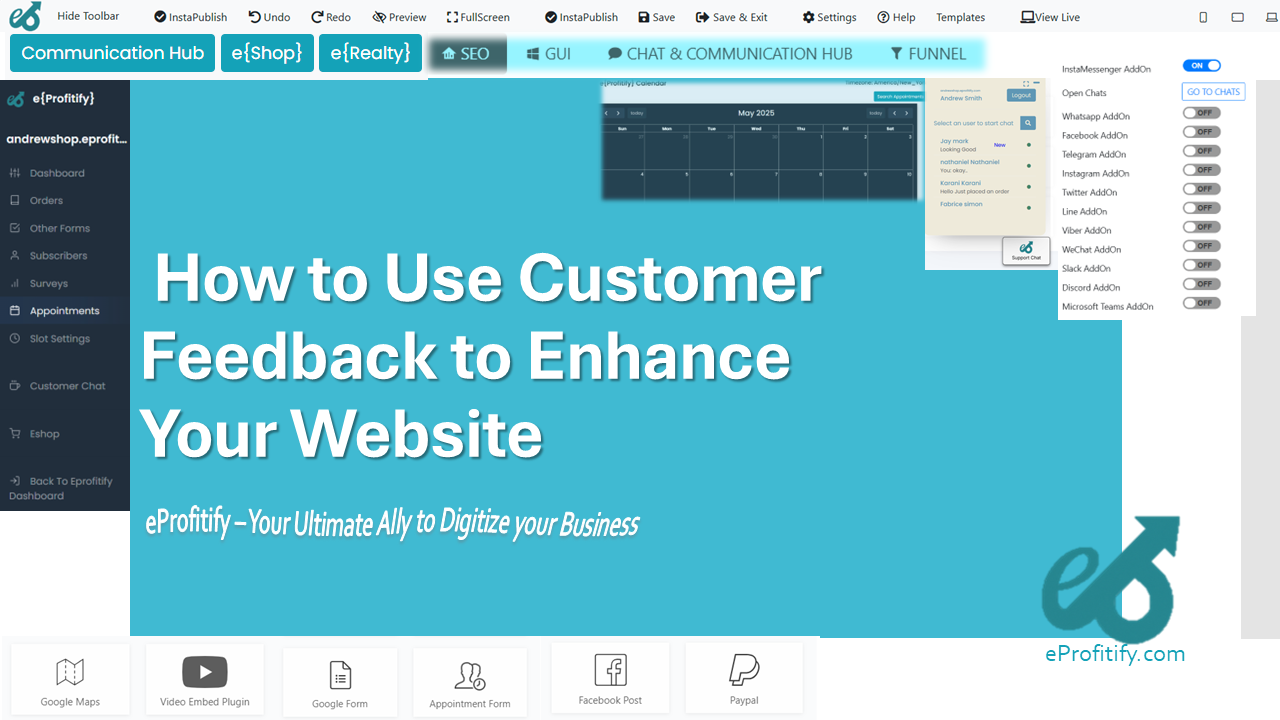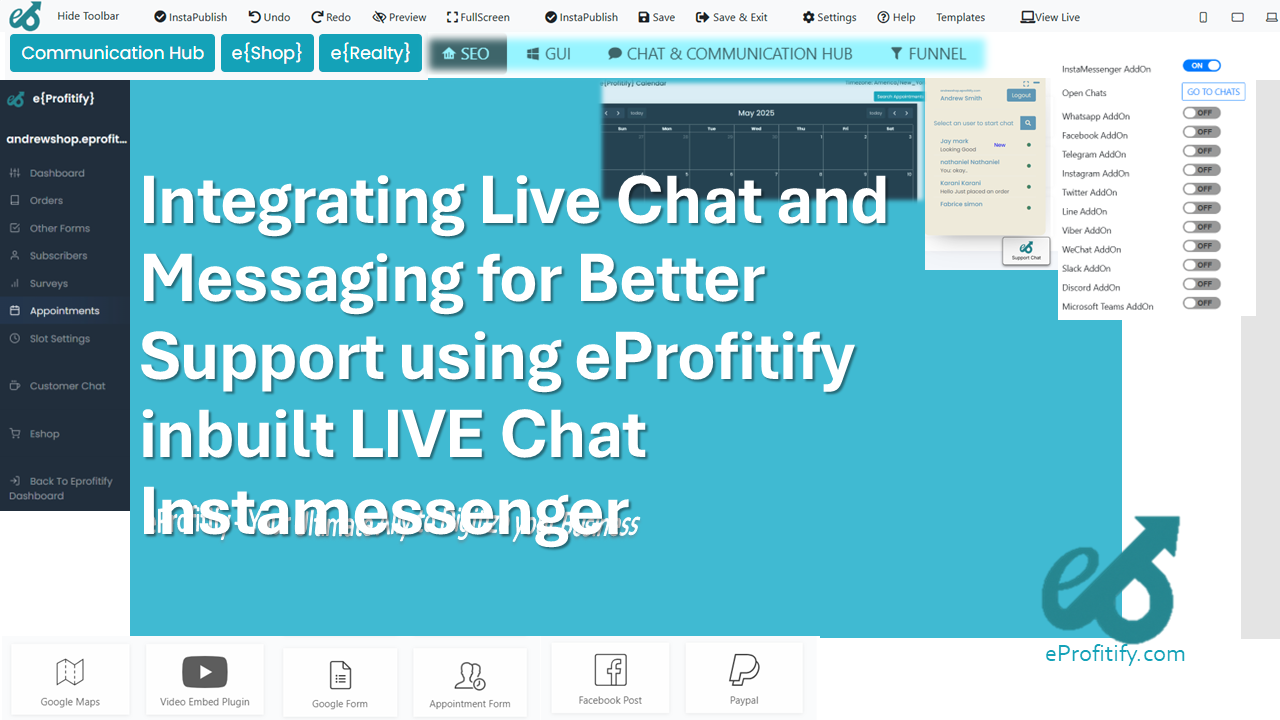How to Prune Weak Content Without Losing SEO Value
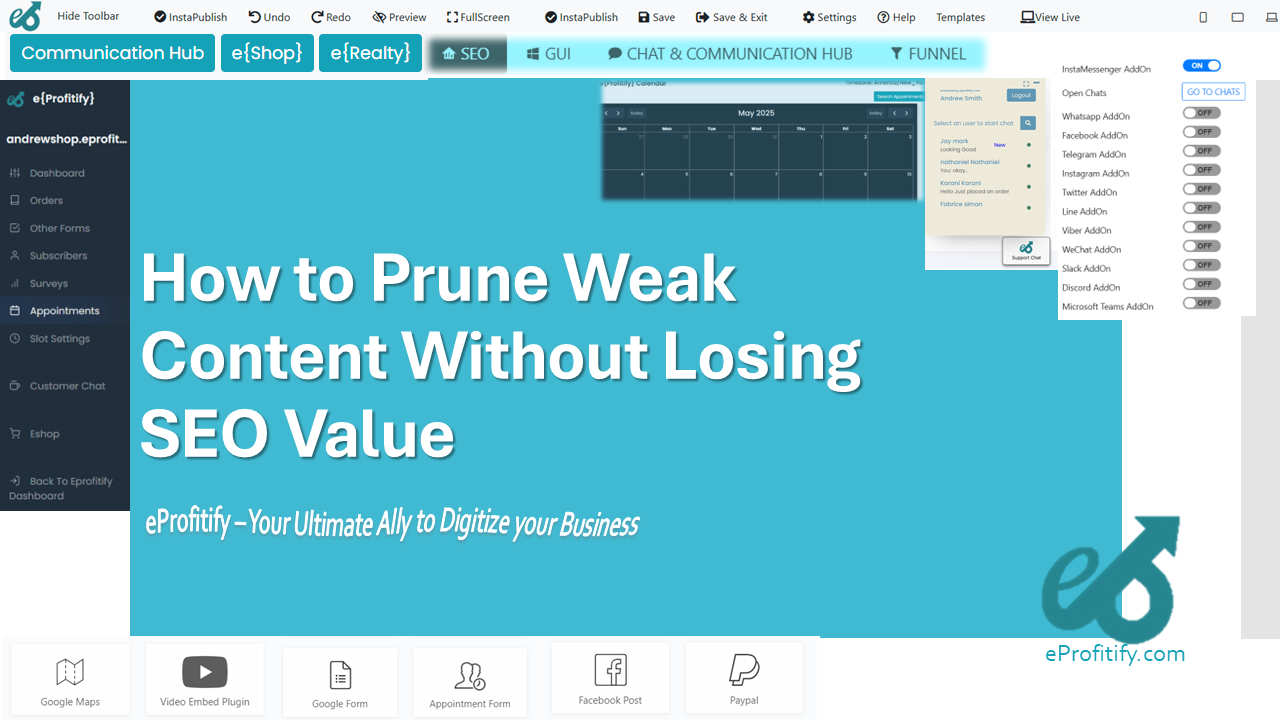
Schedule a LIVE Zoom call with an eProfitify Expert.
In the ever-evolving landscape of digital marketing, maintaining a website’s SEO health is critical. A common challenge businesses face is managing outdated or underperforming content without harming their search engine rankings. Pruning weak content is essential, but it must be done strategically to preserve—and even enhance—SEO value. This guide explores actionable steps to achieve this balance, backed by statistics, and highlights how eProfitify, a leading website publishing and management platform, streamlines the process with tools like instant messaging, appointment management, ecommerce integration, CRM, and more.
Why Content Pruning Matters
Google’s algorithm prioritizes content quality, relevance, and user experience. As websites grow, they accumulate posts, product pages, or articles that become outdated, redundant, or irrelevant. These "content weeds" dilute SEO performance by:
- Cannibalizing keywords: Competing pages targeting similar keywords split ranking potential.
- Increasing bounce rates: Poor-quality content drives visitors away, signaling low relevance to search engines.
- Wasting crawl budget: Googlebot wastes resources indexing low-value pages instead of prioritizing high-performing content.
According to Ahrefs, 65% of blog posts receive negligible organic traffic after their first year, and 94% of all web pages get zero traffic from Google. This underscores the need for regular content audits.
Steps to Prune Content Without Losing SEO Value
1. Audit Existing Content
Start by identifying underperforming pages. Tools like Google Analytics, Google Search Console, and eProfitify’s built-in analytics simplify this process. Key metrics to analyze:
- Organic traffic: Pages with declining or stagnant traffic over 6–12 months.
- Conversion rates: Content that doesn’t drive leads or sales.
- Bounce rate: Pages with rates exceeding 70–80% may indicate low relevance.
- Backlinks: Retain pages with valuable backlinks, even if underperforming.
Statistic: HubSpot reports that 55% of marketers prioritize updating old content as a top SEO strategy.
2. Decide: Update, Merge, or Delete
Not all weak content should be deleted. Categorize pages into:
- Update: Refresh outdated information, optimize keywords, and add new insights. For example, a 2021 "SEO Trends" post can be revised for 2024.
- Merge: Combine thin or overlapping content into a comprehensive resource. Redirect old URLs to the new page to preserve link equity.
- Delete: Remove irrelevant or non-strategic content (e.g., expired event pages). Use 301 redirects if the page has backlinks.
Statistic: Backlinko found that 45% of updated pages rank higher within a year of revisions.
3. Preserve Link Equity
When deleting pages, use 301 redirects to route users and search engines to related, high-quality content. This prevents "404 errors" and retains SEO value from backlinks. Tools like Screaming Frog or eProfitify’s site management dashboard automate broken link detection and redirection.
4. Strengthen Internal Linking
After pruning, enhance the visibility of high-performing pages through internal links. Link from updated posts to cornerstone content to distribute authority. eProfitify’s SEO toolkit offers intuitive internal linking suggestions based on keyword relevance.
5. Monitor Performance
Track changes using tools like Google Analytics or eProfitify’s real-time reporting. Assess rankings, traffic, and conversions to ensure pruning efforts yield positive results.
How eProfitify Simplifies Content Pruning
eProfitify is a robust platform designed to streamline website management, making it easier to execute SEO strategies like content pruning. Key features include:
- Unified Analytics Dashboard: Track traffic, conversions, and user behavior across all pages in one place.
- CRM Integration: Identify high-value content by aligning performance data with customer insights.
- Instant Messaging & Collaboration: Coordinate with teams to audit, update, or delete content efficiently.
- Automated Redirect Management: Minimize manual work by automating 301 redirects for deleted pages.
- Ecommerce & Appointment Tools: Optimize product pages and service listings while maintaining SEO integrity.
For example, a retail brand using eProfitify can merge outdated product descriptions into a new, SEO-optimized guide, then use CRM data to tailor content to high-intent buyers. The platform’s integrated tools eliminate silos between SEO, content, and customer management.
Final Thoughts
Pruning weak content is a non-negotiable practice for maintaining SEO dominance. By auditing rigorously, preserving link equity, and leveraging platforms like eProfitify, businesses can eliminate clutter while boosting rankings and user engagement. As 25% of marketers report organic search as their highest ROI channel (BrightEdge), strategic content management will remain a competitive differentiator. With tools that unify analytics, collaboration, and automation, eProfitify empowers teams to prune smarter—not harder—and sustain long-term growth.

